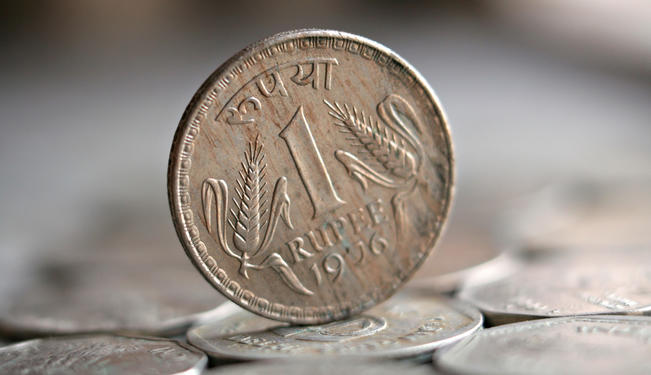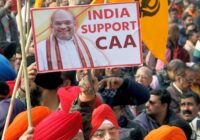Indian policymakers rarely act upon reform in a serious, convincing way.
“It is not in the stars to hold our destiny but in ourselves.”
Several developments related to India call to mind William Shakespeare’s famous line in Julius Caesar. The first are the tours of the United States that Finance Minister Palaniappan Chidambaram and Commerce and Industry Minister Anand Sharma undertook a few weeks ago, aimed at drumming up foreign investment. The second is the continuing hue and cry in New Delhi over Beijing’s energetic efforts to create a sphere of influence in the strategically important Indian Ocean basin. In both cases, Indian leaders would be well advised to spend more of their energy getting their country’s act together before looking abroad.
An Economic Pariah
India’s fall from grace among global investors has been striking. Just a few years ago, it was regarded, along with China, as an engine of the dawning Asian century. It was the darling of the Davos set as well as the inspiration for such fashionable concepts as frugal innovation, economic “flatness” and the BRICs grouping. Leaders in New Delhi even spoke about the coming “Indian Century,” and how the country would inevitably eclipse China as the center of gravity in Asia.
But nowadays, India is something of an economic pariah. Foreign direct investment inflows were down by nearly a third in 2012, compared to the previous year, and some $7 billion in portfolio investment fled the country last month alone. The flight of foreign capital is depressing the rupee’s value to record lows vis-à-vis the US dollar, and the rupee is now the worst performing currency in emerging Asia. India is experiencing the weakest economic growth in a decade, along with a record-setting current account deficit. International ratings agencies are threatening to downgrade the country’s sovereign credit rating to “junk” status. And further denting India’s image are announcements by global steel giants ArcelorMittal and Posco that they are abandoning high-profile steel projects due to the land-acquisition problems that derail many large-scale foreign investment plans in India.
Against this background, one wonders why Chidambaram and Sharma even thought to leave New Delhi. After all, how could they possibly hope to woo foreign investors when Indian business leaders increasingly disparage investment opportunities inside the country and Prime Minister Manmohan Singh is forced to plead with them to “keep the faith.” Moreover, on the eve of Chidambaram’s departure, his cabinet colleagues undermined the sales pitch by publicly rebuffing his proposals for relaxing rules on FDI in a number of key sectors. As Reuters quoted a senior finance ministry official as saying, “the fall of the rupee and delay in policy reforms could affect our credibility.”* The US audiences the Indian tag team addressed did not come away very impressed.
A year ago, Prime Minister Singh acknowledged that enacting the economic reforms the country desperately requires would entail “courage and some risks.” Chidambaram and Sharma would have done more good staying at home and pressing this point on their Congress Party compatriots. And if they need to bolster their case, they can point to the blunt advice that the heads of the Asian Development Bank and the International Finance Corporation (the World Bank’s private-sector arm) recently directed New Delhi’s way.
China: Playing the Field
Taking good care of business at home is also how Indian leaders should address China’s diligent efforts at building up its strategic presence in South Asia. Over the past decade, Beijing has made major investments in building and managing a network of maritime facilities throughout the Indian Ocean that promise to reshape the regional economy. These efforts include constructing one of the world’s largest container ports in Colombo in Sri Lanka, as well as developing the port of Hambantota on that country’s south coast. They also entail major port projects in Pakistan (Gwadar and Karachi), as well as at Chittagong in Bangladesh and at Kyaukphyu in Myanmar. In many cases, these facilities are part of even larger initiatives to build rail, road and pipeline networks that connect directly with Chinese territory.
Beijing is busy courting the region’s tiny but strategically placed island nations of Seychelles and the Maldives. It is even trying to elbow India out of the port development project in Chabahar, Iran (located at the mouth of the Persian Gulf) that New Delhi has agreed to fund. And last month, Beijing gathered together leaders from India’s neighbors to announce a new push to deepen economic engagement with South Asia.
China has exhibited an impressive degree of industriousness, one that contrasts vividly with India’s languid approach to regional leadership. The level of activity has raised strategic hackles in New Delhi, since it not only enables China to make deep commercial inroads in an area of the world where it has largely been absent since Admiral Zheng’s treasure fleet six centuries ago, but also furnishes possible platforms for extending the rapidly-growing Chinese navy into India’s backyard. An Indian defense ministry report that was leaked two months ago warns that the increasing patrols undertaken by Chinese attack submarines in the Indian Ocean are aimed at gaining control of “highly-sensitive sea lines of communication.” And the Economist notes that one reason why Chinese exertions in Sri Lanka worry Indian strategists is because:
“…Colombo is a “transhipment” hub for India: big ships unload containers there and feeder boats take these to India’s often crummy ports. About 13% of India’s container traffic travels via Colombo. If the new terminal ran at full capacity and dedicated itself to transhipping containers to India, that could rise to 28%, leaving the country dependent on a foreign-run choke point. ”
The concern in New Delhi is natural enough, though the reaction so far – grousing about nefarious Chinese designs – has mainly served to highlight India’s inadequacies. A much better reaction would be to declare emphatically that India will step up to the challenge by transforming itself into the driving force powering South Asia’s economic integration. This would entail a concerted high-priority effort at developing world-class ports of its own, as well as fostering robust trade and transportation linkages throughout the region and beyond.
Indeed, New Delhi policymakers regularly make noises to this effect. A Cabinet-level committee was recently set up to fast-track approvals for large-scale infrastructure projects. And with Japanese funding, major economic corridors are being constructed that will link Delhi with Mumbai and Chennai with Bangalore. Still, anarchic land-acquisition laws and bureaucratic inertia are allowed more often than not to impede infrastructure development. A good example is the continuing problems in building a modern highway network, despite repeated promises by political officials to accelerate construction. As one Indian business leader involved in infrastructure development says: “The reality lags behind the ambitions.”
Externally, the “Look East” policy launched two decades ago has led to some success in deepening commercial ties with Southeast Asia, though many opportunities continue to slip away due to domestic infrastructure deficiencies. And while New Delhi is developing the deep-water port of Sittwe in Myanmar in a landmark scheme to directly link India’s isolated northeastern states to the booming markets of Southeast Asia, the project has fallen behind schedule.
Words into Actions
New Delhi is long on rhetoric, but what is missing is a real sense of urgency. Hard questions need to be continuously raised and addressed. Instead of the handwringing over Chinese involvement in Colombo’s port expansion, political leaders should ask why large container ships with cargo bound for India are forced to use Sri Lanka for transshipment in the first place. Likewise, why are Indian port facilities so notoriously inefficient, with turnaround times far longer than in Colombo on the other side of the Palk Strait? Why is the quality of port infrastructure in India ranked at 80 (out of 144 countries) in the World Economic Forum’s latest Global Competitiveness Index, when Sri Lanka is pegged at 45 and Pakistan at 60?
Another good question: Kolkata was once the headquarters of the British East India Company, one of the mightiest agents for economic globalization in world history. So why does it lack a modern port and been allowed to become a backwater not only in the global economy, but also the Indian economy?
In short, Indian leaders should ponder the fundamental reasons why, despite the common civilizational and historical links that permeate South Asia, New Delhi has been unable to integrate the area in the same way that Beijing has economically stitched together the much more culturally diverse and geographically disperse East Asian region. The answer, of course, is that China’s domestic economy possesses far greater clout. In turn, this leads back to the vital importance of the economic reform project in India. Policymakers in New Delhi occasionally make rhetorical nods to the reform agenda but rarely act upon it in a serious, convincing way. Until they do, all the overseas publicity tours will not amount to much.
*That the Indian government has now approved the lifting of FDI caps, following Chidambaram and Sharma’s arrival back in New Delhi, only reinforces this point. Instead of trying to impress foreign investors with an empty hand, their time would have been better spent rallying political will at home.
The views expressed in this article are the author's own and do not necessarily reflect Fair Observer’s editorial policy.
Image: Copyright © Shutterstock. All Rights Reserved
Support Fair Observer
We rely on your support for our independence, diversity and quality.
For more than 10 years, Fair Observer has been free, fair and independent. No billionaire owns us, no advertisers control us. We are a reader-supported nonprofit. Unlike many other publications, we keep our content free for readers regardless of where they live or whether they can afford to pay. We have no paywalls and no ads.
In the post-truth era of fake news, echo chambers and filter bubbles, we publish a plurality of perspectives from around the world. Anyone can publish with us, but everyone goes through a rigorous editorial process. So, you get fact-checked, well-reasoned content instead of noise.
We publish 2,500+ voices from 90+ countries. We also conduct education and training programs
on subjects ranging from digital media and journalism to writing and critical thinking. This
doesn’t come cheap. Servers, editors, trainers and web developers cost
money.
Please consider supporting us on a regular basis as a recurring donor or a
sustaining member.
Will you support FO’s journalism?
We rely on your support for our independence, diversity and quality.







Comment